CBSE Multiple Choice Questions
Multiple Choice QuestionsFrom the top of a tower, 80 m high from the ground, a stone is thrown in the horizontal direction with a velocity of 8 ms-1 . The stone reaches the ground after a time 't' and falls at a distance of 'd' from the foot of the tower. Assuming g = 10 m/s2, the time t and distance d are given respectively by
6 s, 64 m
6 s, 48 m
4 s, 32 m
4 s, 16 m
A particle moves with constant acceleration along a straight line starting from rest. The percentage increase in its displacement during the 4th second compared to that in the 3rd second is
33 %
40 %
66 %
77 %
Particle A moves along X-axis with a uniform velocity of magnitude 10 m/s. Particle B moves with uniform velocity 20 m/s along a direction making an angle of 60° with the positive direction of X-axis as shown in the figure. The relative velocity of B with respect to that of A is
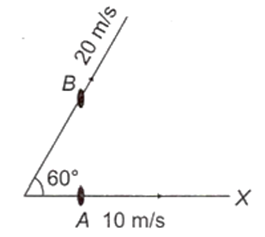
10 m/s along X-axis
m/s along Y-axis (perpendicular to X-axis)
m/s along the bisection of the velocities of A and B
30 m/s along negative X-axis
A cylinder of height h is filled with water and is kept on a block of height h/2. The level of water in the cylinder is kept constant. Four holes numbered 1,2, 3 and 4 are at the side of the cylinder and at heights 0, h/4, h/2 and 3h/4, respectively. When all four holes are opened together, the hole from which water will reach farthest distance on the plane PQ is the hole number
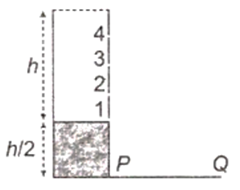
1
2
3
4
A ball is thrown vertically upwards. Which of the following plots represents the speed-time graph of the ball during its flight if the air resistance is not ignored?
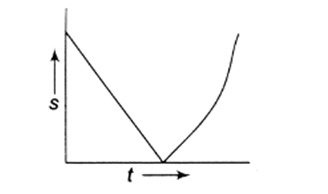
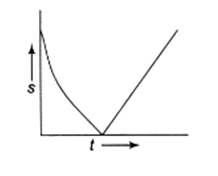
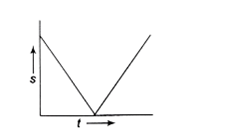
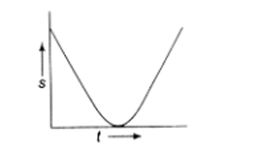
An earthquake generates both transverse (S) and longitudinal (P) sound waves in the earth. The speed of S waves is about 4.5 km/s and that of P waves is about 8.0 km/s. A seismograph records P and S waves from an earthquake. The first P wave arrives 4.0 min before the first S wave. The epicentre of the earthquake is located at a distance about
25 km
250 km
2500 km
5000 km

